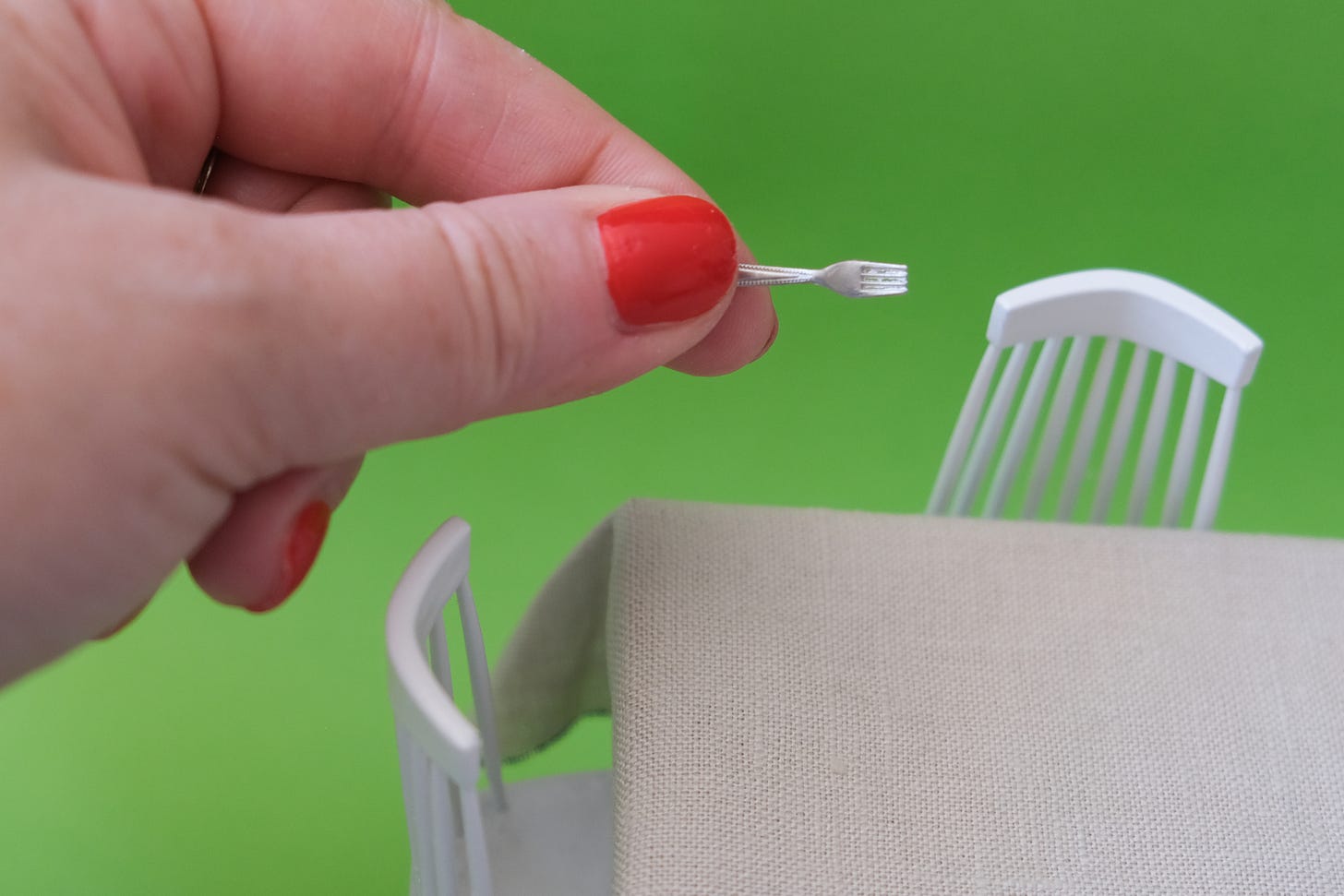We get to set the table!
One of the many intimidating yet exhilarating parts of starting a company
Last week I introduced Practice. We have a website! And a waitlist! People we don’t know are joining that waitlist and seem to be connecting with our vision!
Things have become very real.
I am both excited and intimidated by the freedom we have to build something from scratch. And I’m so glad we decided to start by drafting our vision, values, and product principles.
No excuses
I’ve spent most of my career leading design teams at startups. I’ve worked hard to ensure that design has (and deserves) “a seat at the table” in company leadership, and is co-leading product development down to the scrum team level by advocating for our users and creating experiences that deliver value and delight.
Factors like limited headcount, tight deadlines, and hesitant stakeholders can make it challenging to build a strong design practice at a company. I've learned to be pragmatic and patient, but have often thought, “If only we had business goals that aligned better with user needs. If only there was an unwavering commitment to delivering user value. If only design had been involved from the start.”
Now that I’m building a company from the ground up, I don’t have to imagine the ideal. I have the opportunity to embed user-centered design principles into the core of our fledgling company (our team currently includes my co-founder Ben (a product person), myself, and a wonderful engineering leader and brand designer who are helping us out as we bootstrap). It’s exhilarating—no excuses, no baggage, and no fight to ensure design and users have a seat at the table. Because I am making the table, and the chairs.
Yet, much like being given an open brief in art school, it’s a bit intimidating. Without that fight, what should a design co-founder focus on (beyond launching a great product that users love)? How can I bake desired behaviors, processes, and mindset into this company from day 1?
I’ve decided it’s by setting the best “table” possible. A table that Ben and I and our collaborators will be excited to work at, and one that sets the tone for what we do and how we do it. And eventually, one that will attract the amazing people who will help us realize our vision of creating joy through creative hobbies as we scale.
Setting the table
So before writing a line of code or creating a single slide deck, my co-founder Ben and I started discussing our vision, values, and product development process as if we were already a real company. And we are a real company now (we had another “it’s getting real” moment when we officially incorporated last week).
Our vision
As I mentioned in my post last week, we are unbelievably inspired and motivated by our vision:
We believe that all humans are inherently creative beings capable of producing joy, awe, and beauty.
We started Practice because we believe being creative is critical to society’s happiness & future.
Our vision is to inspire people worldwide to rediscover their creativity, fostering boundless joy. In doing so, we aim to build a stronger, happier, and more resilient planet, prepared to face future challenges.
Practice’s reason for existing is to help people be more creative and experience more joy. What a dream! We really wanted to have this early draft of our vision committed to (digital) paper so we are aligned and can use it to guide decision making from the start.
Our company values
In our earliest conversations, Ben and I started brainstorming what type of company we wanted to build and the culture we wanted to create. We discussed what we appreciated in past workplaces and what we wanted to avoid. And a few months ago—before Practice even had its name—we drafted these values:
Work hard, play hard
We take creating joy very seriously, but we also want to make space for a rich life outside of work. We are focused, engaged, diligent and productive when we work, but also supportive of closing the laptop and touching grass/the cutting mat. From the start, we envisioned a four-day work week and encourage the team to find balance.No jerks allowed!
Don’t be a jerk. No sexism, racism, homophobia, ableism, etc. allowed. We welcome critical, skeptical, and divergent opinions and we expect healthy, respectful conflict. But, if you’re a jerk, you won’t be part of our team.Strong opinions, loosely held
A little cliché, but hey, it works. We value strong points of view and data-driven hypotheses, balanced with humility and flexibility when presented with new information.
Start with trust
If you’re part of the team, we assume you’re smart, have good intentions, and are competent. You should assume the same about others on the team. Everyone is empowered to make decisions that further the company’s mission and goals.
Keep it fun
If helping the world reconnect with joy is making you cry at your desk, we’ve failed.
Practice Product Principles
Ben and I have also talked about how we want to build software. We’ve seen things that work well, and things that we had wished were different. We articulated the following principles to guide us (not about the specific “how” but more about our general approach):
Focus on the user, their needs, and how we can create joy
Find the fastest, easiest way to deliver value and test assumptions/hypotheses
Right-size our artifacts and process—only what we need to ship great product
Build with scalability and the future in mind, but don’t let it slow us down
Don’t reinvent the wheel; use 3rd party tools and native components when appropriate
We’ll add to this list as Practice evolves.
We’ve definitely set the table early
We’re still early in our journey—111 days since we started using Notion and 77 days with Slack. Who knows if these values and principles will still resonate in a few months or after we launch v1 of Practice? They are definitely first drafts that need refining, but the spirit is there, already shaping the culture and vibe of our baby company. Writing them down has made everything feel more real, and sharing them in this post has added to the realness. The true test will be how they hold up as the team grows, as we learn from our users, and as we adapt and pivot.
It might seem premature to focus on these foundational elements so early in our journey, especially with such a small team. But it’s like how my mom always sets the table the night before a holiday, putting out the place settings and labeling the serving dishes she wants to use for each part of the meal. It makes the next day go smoother and serves as a guide, allowing others to help realize her vision. And if the kitchen gets chaotic and things don’t go as planned, at least the table is set.
So, I’m glad we’ve established these foundations early. It allows us to focus on building a great product for our customers, all while sitting around the table we’ve set together.





